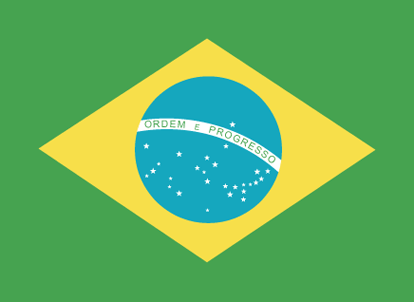
Characterized by large and well-developed agricultural, mining, manufacturing, and service sectors, and a rapidly expanding middle class, Brazil's economy outweighs that of all other South American countries, and Brazil is expanding its presence in world markets. Since 2003, Brazil has steadily improved its macroeconomic stability, building up foreign reserves, and reducing its debt profile by shifting its debt burden toward real denominated and domestically held instruments. In 2008, Brazil became a net external creditor and two ratings agencies awarded investment grade status to its debt. After strong growth in 2007 and 2008, the onset of the global financial crisis hit Brazil in 2008. Brazil experienced two quarters of recession, as global demand for Brazil's commodity-based exports dwindled and external credit dried up. However, Brazil was one of the first emerging markets to begin a recovery. In 2010, consumer and investor confidence revived and GDP growth reached 7.5%, the highest growth rate in the past 25 years. Rising inflation led the authorities to take measures to cool the economy; these actions and the deteriorating international economic situation slowed growth in 2011-13. Unemployment is at historic lows and Brazil's traditionally high level of income inequality has declined for each of the last 14 years. Brazil's historically high interest rates have made it an attractive destination for foreign investors. Large capital inflows over the past several years have contributed to the appreciation of the currency, hurting the competitiveness of Brazilian manufacturing and leading the government to intervene in foreign exchange markets and raise taxes on some foreign capital inflows. President Dilma ROUSSEFF has retained the previous administration's commitment to inflation targeting by the central bank, a floating exchange rate, and fiscal restraint.
$2.416 trillion (2013 est.)
country comparison to the world: 8
$2.362 trillion (2012 est.)
$2.342 trillion (2011 est.)
2.3% (2013 est.)
country comparison to the world: 137
0.9% (2012 est.)
2.7% (2011 est.)
$12,100 (2013 est.)
country comparison to the world: 105
$11,900 (2012 est.)
$11,900 (2011 est.)
agriculture: 5.5%
industry: 26.4%
services: 68.1% (2013 est.)
21.4%
note: official Brazilian data show 4.2% of the population being below the "extreme" poverty line in 2011 (2009 est.)
6.2% (2013 est.)
country comparison to the world: 180
5.4% (2012 est.)
107.3 million (2013 est.)
country comparison to the world: 6
agriculture: 15.7%
industry: 13.3%
services: 71% (2011 est.)
5.7% (2013 est.)
country comparison to the world: 54 5.5% (2012 est.)
textiles, shoes, chemicals, cement, lumber, iron ore, tin, steel, aircraft, motor vehicles and parts, other machinery and equipment
3% (2013 est.)
country comparison to the world: 99